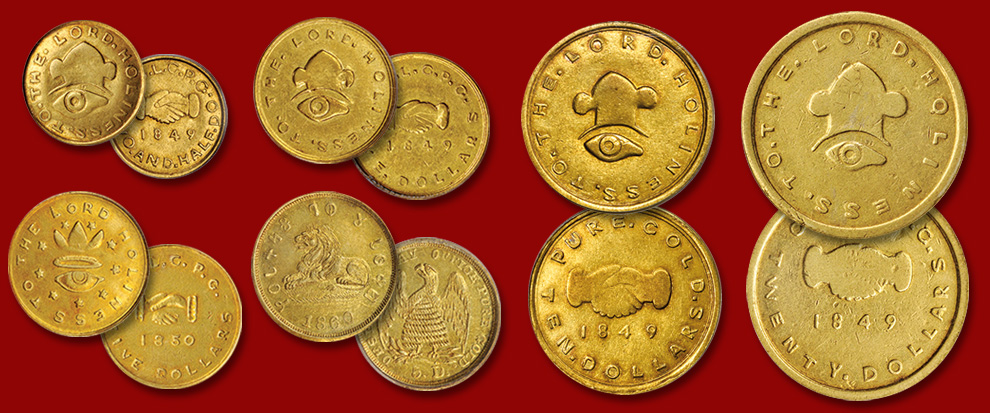
The gold coins issued by the Church of Jesus Christ of
Latter-Day Saints, or the Mormons, are among the most prized and elusive relics
of the Western Gold Rush era. Produced at the Deseret Assay Office in Salt Lake
City, these coins were struck periodically from 1848 through 1861 using gold
sourced from California and Colorado. Variances in weight and fineness drove
many of these to be melted in the decades following their production, leaving
few survivors to be cherished by collectors today.
The Larry H. Miller Collection of Mormon Gold is among the
most significant such cabinets ever assembled.
While a single Mormon gold piece represents a significant achievement, a
comprehensive suite has only been assembled in a handful of instances in the
more than century and a half since these pieces left the Deseret Assay
Office.
The Green-Carter 1849 $10 in the Miller Collection is among
the best preserved of only about 10 known, and joins the historic Jenks-Nygren 1849
$20 as the sole finest approved by CAC for their respective issues. In
addition, the $2.50 and $5 denominations are represented by some of the most
desirable survivors, including a glorious Mint State 1860 “Beehive” $5 that
also sits alone at the pinnacle of the CAC Population Report.
Individually, these rarities from Salt Lake City are
impressive, but together they represent an historic milestone in the field of
Private and Territorial coinage. With its virtually unprecedented quality, the
Larry H. Miller Collection will surely be remembered among the greatest presentations
of Mormon gold ever offered at auction.





